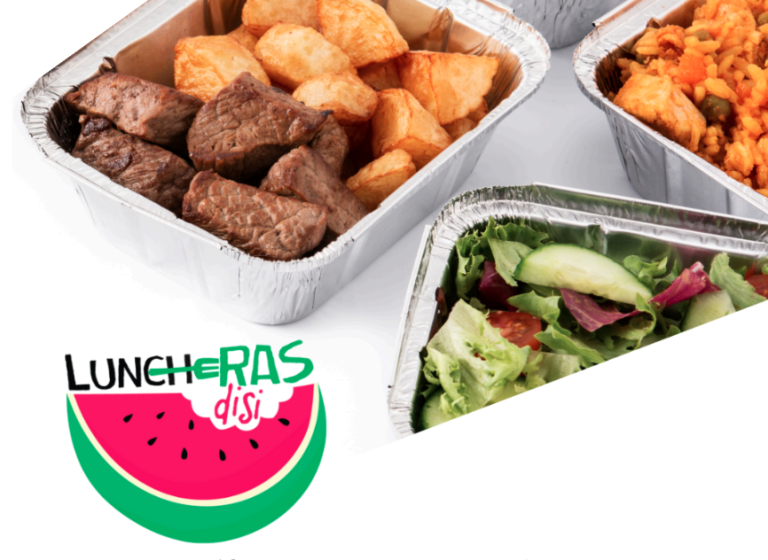As a passionate charcuterie entrepreneur, you know that creating exceptional cured meats and artisanal accompaniments is only half the battle.
To turn your culinary passion into a thriving business, you need a well-crafted charcuterie business plan.
This comprehensive guide will walk you through the essential components of a winning plan, from market analysis and financial projections to marketing strategies and operational considerations.
By the end, you’ll have a roadmap to guide your charcuterie business to success, ensuring that your dedication to this timeless culinary art shines through in every aspect of your venture.
Let’s dive in and start building the foundation for your charcuterie empire.

Metrobi has been a game changer for charcuterie board industry.
With Metrobi, you can save 23% on delivery costs, save 80% of the time from managing deliveries, and delight your customers with delivery notifications & tracking.
Crafting a Successful Charcuterie Business Plan: Key Components to Include
Executive Summary: Presenting Your Charcuterie Business Vision
Your charcuterie business plan should begin with a concise executive summary that encapsulates your overall business concept, target market, and financial projections. This section is crucial as it provides a snapshot of your business to potential investors, partners, and stakeholders.
Start by clearly stating your charcuterie business’s mission and vision. Highlight the unique aspects of your products and services that set you apart from competitors. Emphasize the quality of your ingredients, the expertise of your team, and any innovative techniques you employ in your charcuterie production process.
Next, briefly discuss your target market and the demand for charcuterie products in your area. Touch on the growth potential of the industry and how your business is poised to capitalize on these opportunities. Finally, provide a high-level overview of your financial projections, including expected revenue, profitability, and any funding requirements.
Market Analysis: Understanding Your Charcuterie Business Landscape
To create a successful charcuterie business, you must have a deep understanding of the market landscape. This section of your business plan should demonstrate that you have conducted thorough research on the industry, your target customers, and your competition.
Utilizing efficient transport solutions can significantly enhance your charcuterie business’s operational capabilities. By integrating a reliable same-day courier service in Atlanta, you can ensure faster deliveries to your customers, which can help elevate the overall experience and satisfaction significantly.
For those looking to expand their reach, consider utilizing a professional courier service in Seattle to streamline your operations further and ensure timely deliveries throughout the region.
Market Value
The global processed meat market, which includes charcuterie, reached over $352.35 billion in 2023.
Start by analyzing the current trends in the charcuterie industry. Look at market size, growth rates, and consumer preferences. Identify any emerging trends or shifts in demand that could impact your business. Use reliable sources, such as industry reports and market research firms, to gather accurate data.
Growth Rate
The charcuterie market is projected to grow at a compound annual growth rate (CAGR) of 5.5% from 2024 to 2030.
Next, define your target customers. Create detailed customer profiles that include demographics, psychographics, and buying habits. Consider factors such as age, income level, lifestyle, and dietary preferences. Understanding your target market will help you tailor your products and marketing strategies to meet their needs effectively.
Finally, assess your competition. Identify both direct and indirect competitors in your market. Analyze their strengths, weaknesses, and market positioning. Determine what sets your charcuterie business apart from the competition and highlight your unique value proposition. To further enhance your operations, consider utilizing Metrobi’s innovative approach to logistics, which ensures swift deliveries. For those based in Texas, their Houston same-day delivery service can be a game-changer for your charcuterie business, helping you meet customer demands efficiently.
Product and Service Offerings: Showcasing Your Charcuterie Specialties
In this section of your business plan, provide a detailed description of your charcuterie product line and any additional services you plan to offer. This is your opportunity to showcase the quality, variety, and uniqueness of your offerings.
Begin by outlining the types of meats, cheeses, and accompaniments that will be included in your charcuterie selections. Describe the sourcing of your ingredients, emphasizing any local, organic, or premium products used. Detail your production process, including any traditional or innovative techniques employed to create your charcuterie specialties.
In addition to your core product line, discuss any complementary services you plan to offer. This may include catering for events, creating custom charcuterie boards for special occasions, or offering in-store tastings and pairings. Explain how these services will enhance the overall customer experience and contribute to your business’s success.
By crafting a comprehensive charcuterie business plan that includes a compelling executive summary, thorough market analysis, and detailed product and service offerings, you’ll be well-positioned to attract investors, secure funding, and launch a successful venture in the exciting world of charcuterie. Unlock the secret to a prosperous charcuterie venture by utilizing these templates for charcuterie business plans, your essential toolkit for launching and thriving.
Charcuterie Business Financial Projections: Ensuring Profitability and Sustainability
Financial projections are critical to the success of your charcuterie business. By accurately forecasting sales, planning expenses, and creating comprehensive financial statements, you can ensure the profitability and sustainability of your venture. Metrobi supports your charcuterie board business by offering delivery solutions across 20+ cities in the US, featuring courier services specifically in San Francisco.
Sales Forecasting: Estimating Your Charcuterie Board Business Revenue
To develop realistic sales projections, start by analyzing your target market and pricing strategy. Consider factors such as the size of your target audience, their purchasing habits, and the competitive landscape. Break down your revenue streams by product category and sales channel to gain a clear understanding of where your income will come from.
Revenue Potential:
A successful charcuterie business can gross over $1 million within three years, as demonstrated by a notable side hustle in the industry.
Factors to Consider When Forecasting Sales
Production capacity: How much product can you realistically produce given your current resources and infrastructure? According to the U.S. Small Business Administration, production capacity is a crucial factor in determining sales potential. At Metrobi, we specialize in streamlining logistics for charcuterie boards, ensuring your delivery operations enhance your production capacity effectively.
Seasonal fluctuations: Charcuterie sales may vary depending on the time of year, with peak demand during holidays and special events. For example, a study by the National Retail Federation found that holiday sales account for nearly 20% of annual retail sales.
Growth opportunities: As your business gains traction, consider potential expansion opportunities, such as catering services or wholesale partnerships. Research by IBISWorld indicates that the catering services industry has grown steadily over the past five years, presenting opportunities for charcuterie businesses.
Expense Planning: Budgeting for Your Own Charcuterie Board Business Operations
To maintain profitability, it’s essential to have a clear understanding of your expenses. Start by identifying and estimating your fixed costs, such as rent, utilities, and insurance, as well as your variable costs, including ingredients, packaging, and labor.
Financial Statements: Demonstrating Your Charcuterie Business Viability
To assess the financial health of your charcuterie business, create a detailed income statement, balance sheet, and cash flow statement. These documents will help you determine your breakeven point and profitability timeline, allowing you to make informed decisions about your business’s future.
Key Financial Statements
Income statement: Summarizes your revenue and expenses over a specific period, demonstrating your profitability. The U.S. Securities and Exchange Commission provides guidelines for preparing income statements.
Balance sheet: Provides a snapshot of your business’s assets, liabilities, and equity at a given point in time. The Financial Accounting Standards Board outlines the requirements for balance sheet preparation.
Cash flow statement: Tracks the inflow and outflow of cash, helping you manage your liquidity and plan for future investments. The International Accounting Standards Board guides cash flow statement preparation.
Assessing Profitability and Sustainability
To determine the viability of your charcuterie business model, use your financial statements to calculate key metrics such as your breakeven point and profitability timeline. A sensitivity analysis can also help you evaluate the impact of various scenarios, such as changes in ingredient costs or sales volume, on your financial performance.
The profitability of a charcuterie business depends on various factors, including your pricing strategy, production efficiency, and market demand. By carefully managing your expenses and optimizing your revenue streams, you can build a sustainable and profitable venture. Additionally, leveraging a delivery service that operates in over 20 US cities, with the option of same-day deliveries in areas like Los Angeles, can significantly extend your market reach and customer base.

Delivery notifications and tracking improve customer satisfaction by 27%.
Metrobi automatically notifies your receivers of ETAs, provides delivery tracking, and collects delivery feedback.
Charcuterie Business Marketing Strategies: Attracting and Retaining Customers
Target Market Segmentation: Identifying Your Ideal Charcuterie Customers
To create an effective marketing strategy for your charcuterie business, you need to identify and understand your target market. Start by defining your primary and secondary target markets based on demographics, psychographics, and behavior.
Demographic Segmentation
Demographic segmentation involves dividing your market based on age, gender, income, education, and occupation. For example, your primary target market might be affluent professionals aged 35-55 who enjoy entertaining at home and appreciate high-quality, artisanal food products.
Psychographic Segmentation
Psychographic segmentation focuses on your target market’s values, interests, and lifestyle. Your ideal charcuterie customers may value quality, uniqueness, and the experience of sharing food with others. They might be interested in gourmet cooking, wine pairing, and hosting social gatherings.
Once you have a clear understanding of your target market, develop customer personas to better understand their needs, preferences, and purchasing habits. These personas will help you tailor your marketing messages and channels to effectively reach and engage your target audience.
Branding and Positioning: Differentiating Your Charcuterie Business
A strong brand identity and positioning are essential for setting your charcuterie business apart from competitors and attracting your ideal customers.
Creating a Unique Brand Identity
Your brand identity should reflect your charcuterie business values and personality. Consider the following elements when developing your charcuterie brand:
Logo and visual elements: Design a logo and choose colors, fonts, and imagery that represent your brand’s personality and values.
Brand voice and tone: Determine how you want to communicate with your target audience, whether it’s sophisticated, friendly, or informative.
Brand story: Develop a compelling narrative that showcases your business’s origin, mission, and what makes you unique.
Establishing Your Positioning Strategy
Your positioning strategy should clearly communicate what sets your charcuterie business apart from competitors. Consider the following factors:
Unique selling proposition (USP): Identify what makes your charcuterie products or services superior to others in the market.
Competitive advantage: Determine what your business does better than your competitors, such as using locally sourced ingredients or offering exceptional customer service.
Brand promise: Clearly articulate the value and experience your customers can expect when choosing your charcuterie business.
Marketing Mix: Promoting Your Charcuterie Products and Services
Once you have defined your target market and established your brand identity and positioning, it’s time to develop a comprehensive marketing mix to further build brand awareness and promote your charcuterie products and services.
Product Assortment and Pricing
Determine the optimal product assortment for your charcuterie business, considering factors such as variety, quality, and customer preferences. Develop a pricing structure that reflects the value of your products and aligns with your target market’s willingness to pay.
Distribution Channels
Identify the most effective distribution channels for your charcuterie products, such as:
In-store retail: Selling your products in gourmet food stores, specialty shops, or your own brick-and-mortar location.
Online sales: Offering your charcuterie products through an e-commerce website or online marketplaces.
Catering and events: Providing charcuterie boards and services for catering business corporate events, weddings, or private parties.
Promotional Plan
Develop a comprehensive promotional plan that includes a mix of digital marketing, social media, and local outreach tactics:
Digital marketing: Implement search engine optimization (SEO), pay-per-click (PPC) advertising, and email marketing campaigns to reach your target audience online.
Social media: Create engaging content and build a strong presence on platforms like Instagram, Facebook, and Pinterest to showcase your charcuterie products and connect with potential customers.
Local outreach: Participate in local food festivals, farmers’ markets, and community events to increase brand awareness and generate sales.
Allocate your marketing budget effectively to maximize return on investment, focusing on the channels and tactics that are most likely to reach and resonate with your target audience.
Delivery Demand:
A single promotional post for a charcuterie board can generate over 20 inquiries within hours.
By implementing a targeted marketing strategy, creating a strong brand identity, and developing a comprehensive marketing mix, you can effectively attract and retain customers for your charcuterie business, setting the stage for long-term success.
Charcuterie Business Operations Planning: Ensuring Smooth and Efficient Functioning
Production and Inventory Management: Streamlining Your Charcuterie Manufacturing Process
Outlining Your Production Workflow
To ensure a smooth and efficient charcuterie production process, start by outlining your workflow from sourcing ingredients to packaging the final products. Break down each step in the process, such as ingredient preparation, curing, slicing, and packaging. Identify the equipment and tools needed for each stage, and determine the optimal layout for your production space to minimize bottlenecks and maximize efficiency. For example, a study by the National Restaurant Association found that optimizing production workflows can reduce food waste by up to 25%.
Establishing Inventory Control Systems
Effective inventory management is crucial for minimizing waste and ensuring consistent product availability. Implement a system to track your ingredient inventory levels, set reorder points, and monitor product shelf life. Consider using inventory management software to automate the process and generate real-time reports. Regularly conduct physical inventory counts to verify the accuracy of your records and make necessary adjustments. According to the Food Marketing Institute, inventory management software can reduce inventory costs by up to 15%.
Implementing Food Safety Protocols
Maintaining high food safety standards is essential for any food business, especially when dealing with cured meats. Develop and implement a comprehensive food safety plan that covers all aspects of your production process, from ingredient sourcing to product storage and food handling alone. Obtain necessary certifications, such as HACCP (Hazard Analysis and Critical Control Points), and train your staff on proper food safety practices. Regularly audit your processes to ensure ongoing compliance with regulations and best practices. The Centers for Disease Control and Prevention (CDC) estimates that foodborne illnesses cost the US economy approximately $15.6 billion annually.
Supply Chain and Logistics: Managing Your Charcuterie Ingredients and Deliveries
Identifying Reliable Suppliers
Building strong relationships with reliable suppliers is key to ensuring consistent quality and availability of your charcuterie ingredients and packaging materials. Research potential suppliers, evaluating their reputation, product quality, pricing, and delivery capabilities. Consider factors such as minimum order quantities, lead times, and payment terms when making your selection. Establish clear communication channels and set expectations for quality, consistency, and timely deliveries. A study by the National Grocers Association found that supplier relationships are critical for maintaining consistent product quality and reducing supply chain disruptions.
Developing Inventory Tracking and Management Systems
To effectively manage your supply chain, develop a system for tracking and managing inventory levels and reorder points. This may involve using inventory management software that integrates with your supplier’s systems, allowing for real-time visibility and automated reordering. Establish par levels for each ingredient and packaging item, considering factors such as lead times, minimum order quantities, and anticipated demand. Regularly review your inventory data to identify trends, optimize order quantities, and minimize carrying costs. According to the Grocery Manufacturers Association, effective inventory management can reduce inventory costs by up to 10%.
Planning for Efficient Storage, Transportation, and Delivery
Efficient storage, transportation, and delivery are critical for maintaining product quality and meeting customer expectations. Invest in appropriate storage facilities, such as temperature-controlled rooms or refrigerated vehicles, to ensure your charcuterie products remain fresh and safe during storage and transit. Develop a system for tracking and managing product expiration dates, and implement a first-in, first-out (FIFO) inventory rotation policy. Plan your delivery routes and schedules to optimize efficiency and minimize transit times, considering factors such as traffic patterns, delivery windows, and vehicle capacity. The International Foodservice Distributors Association estimates that efficient transportation and delivery practices can reduce transportation costs by up to 12%.
Human Resources: Building Your Charcuterie Business Team
Determining Staffing Needs
As your charcuterie business grows, it’s important to identify your staffing needs across various functions, such as production, sales, and administration. Assess the workload and skill requirements for each role, and determine the optimal number of employees needed to support your operations. Consider factors such as production volume, sales targets, and administrative tasks when making your staffing decisions. According to the Bureau of Labor Statistics, the food manufacturing industry is expected to grow by 2% annually through 2025, highlighting the need for strategic staffing planning.
Creating Job Descriptions and Hiring Processes
Develop clear and comprehensive job descriptions for each role in your charcuterie business, outlining the responsibilities, qualifications, and performance expectations. Use these job descriptions to guide your hiring process, ensuring that you attract and select candidates with the right skills and experience. Establish a structured interview process that includes multiple stages, such as initial screening, skills assessments, and final interviews. Conduct thorough background checks and reference checks before making job offers. The Society for Human Resource Management recommends a multi-step hiring process to ensure the best candidate fit.
Establishing Employee Training and Development Programs
Investing in employee training and development is crucial for building a skilled and motivated team. Create a comprehensive onboarding program that introduces new hires to your company culture, policies, and procedures. Develop ongoing training programs that cover topics such as food safety, product knowledge, sales techniques, and customer service. Encourage cross-functional training to promote flexibility and collaboration among team members. Offer opportunities for professional development, such as attending industry conferences or workshops, to keep your team engaged and up-to-date with the latest trends and best practices. The National Restaurant Association found that employee training programs can improve employee retention by up to 25%.
Fostering a Positive Company Culture and Employee Retention
Creating a positive and supportive company culture is essential for attracting and retaining top talent in your charcuterie business. Establish clear communication channels and encourage open feedback and dialogue among team members. Recognize and reward employee achievements, both individually and as a team. Offer competitive compensation and benefits packages, including health insurance, paid time off, and retirement plans. Foster a sense of community and camaraderie through team-building activities, such as group outings or volunteer projects. Regularly assess employee satisfaction and engagement through surveys and one-on-one meetings, and take action to address any concerns or issues that arise. According to the Harvard Business Review, a positive company culture can improve employee retention by up to 30%.
The Importance of Charcuterie: A Timeless Culinary Art
Preserving Culinary Traditions
Charcuterie, the art of preparing cured meats and accompaniments, has a rich history that spans centuries. The techniques used in charcuterie have been passed down through generations, originating in ancient times when preserving meat was essential for survival. Today, charcuterie remains a vital part of many cultures’ gastronomic heritage, particularly in Europe.
By creating a charcuterie business, you contribute to the preservation and promotion of these time-honored traditions. Your business becomes a steward of culinary knowledge, ensuring that the skills and recipes of the past are not lost to time. Through your products and services, you introduce customers to the rich tapestry of flavors and textures that charcuterie has to offer, sparking an appreciation for the art form and its historical significance.
Celebrating Craftsmanship and Quality
Charcuterie is more than just a culinary technique; it is a celebration of craftsmanship and quality. Creating exceptional charcuterie products requires expertise, patience, and a keen eye for detail. From selecting the finest ingredients to carefully monitoring the curing process, charcuterie artisans put their skills and passion into every bite.
Your charcuterie business has the opportunity to showcase this artisanal nature and educate customers on the value of craftsmanship. By highlighting the time, effort, and dedication that goes into creating your products, you foster an appreciation for the art of charcuterie and the skilled artisans who practice it.
Providing a Unique and Memorable Dining Experience
One of the most compelling aspects of charcuterie is its ability to create a unique and memorable dining experience. Whether enjoyed as an appetizer, main course, or snack, charcuterie encourages shared dining and fosters a sense of community and conviviality.
Your charcuterie business can play a key role in creating these memorable moments for customers. By offering a carefully curated selection of meats, cheeses, and accompaniments, you provide the foundation for a delightful sensory experience that brings people together over a shared love of food.
Supporting Local and Sustainable Food Systems
In addition to celebrating culinary traditions and craftsmanship, charcuterie businesses have the opportunity to support local and sustainable food systems. Many charcuterie artisans prioritize sourcing ingredients from local farmers and producers, establishing relationships that benefit both parties.
By partnering with local suppliers, your charcuterie business contributes to the development of a more sustainable and resilient food system. You help support small-scale producers, reduce the environmental impact of transportation, and promote the use of ethically raised meats and artisanal, small-batch production methods.
The Benefits of Local Sourcing
Sourcing ingredients locally offers several key benefits for your charcuterie business:
-
Freshness: Local ingredients are often fresher and of higher quality, as they spend less time in transit.
-
Traceability: Working directly with local suppliers allows for greater transparency and traceability in the supply chain.
-
Community support: By supporting local businesses, farmers and producers, you contribute to the economic well-being of your community.
-
Sustainability: Local sourcing reduces the carbon footprint associated with transportation and supports more environmentally friendly production practices.
Educating Consumers on the Value of Charcuterie
As a charcuterie business owner, you have the unique opportunity to educate consumers on the value and significance of this timeless and sophisticated culinary art form. By sharing the rich history, craftsmanship, and cultural importance of charcuterie, you can foster a deeper appreciation for the products you offer and the artisans who create them.
Consider incorporating educational elements into your business, such as:
-
Tasting events: Host guided tastings that allow customers to explore different charcuterie products and learn about their origins and production methods.
-
Workshops: Offer hands-on workshops where participants can learn the basics of charcuterie making and gain a deeper understanding of the artisanal process.
-
Storytelling: Share the stories behind your products, highlighting the traditions, techniques, and people that make your charcuterie unique.
By engaging customers in the story of charcuterie, you not only enhance their experience but also contribute to the preservation and promotion of this important culinary heritage.
The Purpose of a Business Plan for a Food Business
Providing a Roadmap for Success
A business plan serves as a comprehensive guide for your charcuterie business, outlining your goals, strategies, and action steps. By creating a detailed plan, you establish a clear direction for your business, ensuring that you stay focused on your objectives and remain accountable for your progress.
Regularly reviewing and updating your business plan is essential to adapt to changes in the market and seize new opportunities as they arise. This ongoing process allows you to make informed decisions based on the latest industry trends, customer preferences, and competitive landscape.
Securing Funding and Investment
A comprehensive business plan is a critical tool when seeking funding from banks, investors, or grants. It demonstrates your charcuterie business’s financial viability, growth potential, and ability to generate returns on investment.
Your business plan should include detailed financial projections, such as income statements, balance sheets, and cash flow statements, based on realistic assumptions and market research. These projections help potential investors understand your revenue streams, cost structure, and profitability over time.
Exploring Funding Options
There are various funding options available for food businesses, each with its own advantages and requirements. Some common funding sources include:
-
Small Business Administration (SBA) loans: Government-backed loans with favorable terms for small businesses
-
Traditional bank loans: Secured or unsecured loans from commercial banks, often requiring collateral and a strong credit history
-
Equity investment: Selling a portion of your business ownership to angel investors or venture capitalists in exchange for capital
-
Crowdfunding: Raising funds from a large number of individuals through online platforms like Kickstarter or Indiegogo
When presenting your business plan to potential investors, be prepared to answer questions about your competitive advantage, target market, and growth strategy. A well-prepared, solid business plan increases your chances of securing the necessary capital to launch and expand your charcuterie business.
Communicating Your Vision and Values
Your business plan is a powerful tool for communicating your charcuterie business’s mission, vision, and values to your team members, stakeholders, and customers. By clearly articulating your business philosophy and long-term goals, you can attract like-minded individuals who share your passion for high-quality, artisanal charcuterie.
A strong mission statement and set of core values help guide decision-making, shape company culture, and differentiate your business from competitors. For example, your mission might be to “create exceptional charcuterie experiences using locally sourced, sustainable ingredients, while supporting small-scale producers and fostering a sense of community.”
Managing Risks and Uncertainties
The process of creating and start a charcuterie business plan forces you to anticipate potential challenges and risks that may impact your charcuterie business. By identifying these issues early on, you can develop contingency plans and risk mitigation strategies to minimize their potential impact.
Some common risks and uncertainties faced by food businesses include:
-
Food safety and contamination risks
-
Supply chain disruptions and ingredient shortages
-
Changes in consumer preferences and market trends
-
Competition from established players and new entrants
-
Economic downturns and shifts in consumer spending habits
Your business plan should address each of these risks and outline specific actions you will take to mitigate them. For example, to manage food safety risks, you might invest in regular staff training, implement strict hygiene protocols, and work closely with reputable suppliers who adhere to industry best practices.
Continuously Refining Your Business Plan
Your business plan is a living document that should evolve alongside your charcuterie business. As you gain new insights, face unexpected challenges, and seize fresh opportunities, it’s essential to revisit and refine your plan regularly.
Set aside dedicated time each quarter or year to review your progress, assess your performance against key metrics, and make necessary adjustments to your strategies and tactics. This ongoing process of reflection and adaptation will help ensure that your charcuterie business remains agile, resilient, and well-positioned for long-term success.
By investing the time and effort to craft a comprehensive, well-researched business plan, you lay the foundation for a thriving charcuterie business that can weather the challenges of the food industry and delight customers with exceptional products and experiences.
The Growing Popularity of Charcuterie: Understanding the Trend
Increasing Appreciation for Artisanal and Craft Foods
In recent years, consumers have been increasingly seeking out high-quality, handcrafted food products. This trend is driven by a growing appreciation for the skill, care, and attention to detail that goes into producing artisanal foods. Charcuterie fits perfectly into this trend, offering a range of expertly crafted meats, cheeses, and accompaniments.
By highlighting the artisanal nature of your charcuterie products, you can tap into this growing market of discerning consumers. Emphasizing the quality of ingredients, traditional production methods, and the expertise of your charcutiers can help set your business apart from mass-produced alternatives.
Rising Interest in Experiential Dining and Entertaining
Charcuterie boards and platters have become popular centerpieces for gatherings and events, offering a visually appealing and interactive way for guests to sample a variety of flavors and textures. This trend is part of a larger shift towards experiential dining, where the focus is on creating memorable and engaging food experiences. Metrobi is at the forefront, facilitating the distribution of charcuterie boards, ensuring this culinary art reaches events seamlessly.
Your charcuterie business can capitalize on this trend by offering catering services for events, workshops on creating the perfect charcuterie board, or ready-to-assemble charcuterie kits for at-home entertaining. By providing solutions that cater to the growing demand for experiential dining, you can position your own charcuterie business for success in this market.
The Social Media Factor
The visual appeal of charcuterie boards has also made them a popular subject for social media posts. Instagram, in particular, has played a significant role in the spread of the charcuterie trend, with users sharing countless photos of beautifully arranged boards.
By creating visually stunning charcuterie products and encouraging customers to share their experiences on social media, you can leverage this platform to increase brand awareness and attract new customers.
Social Media Influence:
A search for "charcuterie" on Instagram yields nearly 1 million results, illustrating its popularity on social media platforms.
Growing Demand for Convenient, Yet Sophisticated Snacking Options
In today’s fast-paced world, many consumers are looking for quick and easy snacking options that don’t compromise on quality or taste. Charcuterie provides a perfect solution, offering a range of flavorful, protein-rich options that can be enjoyed on the go or as a quick meal.
According to a survey by the National Restaurant Association, 75% of consumers prefer snacks that are both healthy and convenient. By offering pre-packaged charcuterie snacks, single-serve portions, or subscription boxes, your business can cater to this growing demand for convenient yet sophisticated snacking options. This can help you attract a wider range of customers, from busy professionals to health-conscious snackers.
The Health Benefits of Charcuterie
While charcuterie is often associated with indulgence, it can also be a part of a balanced diet when consumed in moderation. Many charcuterie meats, such as prosciutto and salami, are rich in protein and healthy fats, making them a satisfying and nutritious choice.
Additionally, the act of assembling and enjoying a charcuterie board can promote mindful eating habits, as it encourages slower, more intentional consumption and appreciation of the flavors and textures of each component.
By highlighting the potential health benefits of charcuterie and offering options that cater to various dietary preferences, your business can appeal to health-conscious consumers and position itself as a provider of wholesome, high-quality snacks.
Charcuterie as an Art Form
Beyond its taste and convenience, charcuterie is also appreciated for its artistic qualities. The creation of a visually appealing charcuterie board requires skill, creativity, and an understanding of unique flavor combinations, and texture combinations.
Many charcuterie enthusiasts view the craft as an art form, with each board offering a unique expression of the charcutier’s vision and expertise. By emphasizing the artistic aspects of your own selling charcuterie boards and products and offering resources or workshops on the art of charcuterie, you can differentiate your business and attract customers who appreciate the aesthetic qualities of food.
For example, a charcuterie board featuring a variety of meats, cheeses, and accompaniments can be arranged to resemble a work of art, with each component carefully selected and placed to create a visually stunning display.
Ready to Start Your Charcuterie Journey?
Creating a successful charcuterie business requires careful planning, a deep understanding of your market, and a commitment to craftsmanship and quality. By developing a comprehensive business plan, you can lay the foundation for a thriving venture that celebrates the rich history and artistry of charcuterie.
So, what’s the first step? Begin by researching your local market, identifying potential suppliers, and refining your product offerings. Reach out to experienced charcuterie professionals for advice and guidance, and don’t be afraid to start small while you perfect your craft.
As you embark on this exciting journey, remember to stay true to your passion for creating exceptional charcuterie experiences. Your dedication to quality and authenticity will set you apart and help you build a loyal customer base.
Are you ready to turn your love for charcuterie into a successful business? Let’s get started!


























